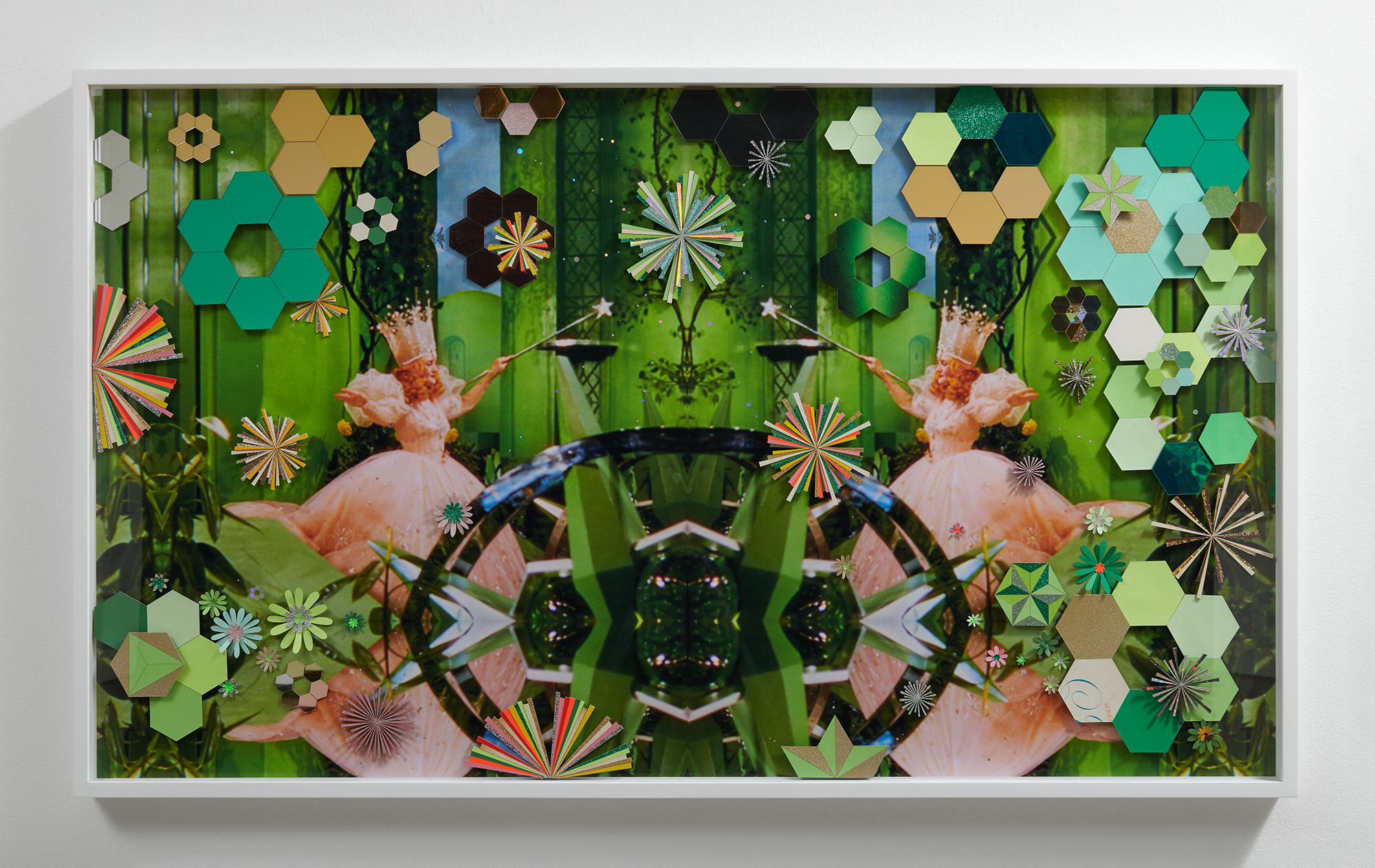
Duality of Glenda (The Good Witch vs. The Good Fairy), 2023, digitally manipulated and printed image on archival paper, found paper, vintage album cover paper, mirrored plexiglass, glitter. Photos by Peter Molick Photography. All artwork courtesy Kelly O'Connor and David Shelton Gallery
Kelly O’Connor’s Pop Culture Hallucinations
Midcentury imagery, shared delusions, and endless enchantment
By Wendy Atwell
Like a spell cast by the Wicked Witch of the West, or the wave of good witch Glinda’s magic wand, Kelly O’Connor’s sparkles, starbursts, and tessellations embellish the Technicolor dream worlds of The Wizard of Oz and Disneyland in Deepfake, O’Connor’s seventh solo exhibition at the David Shelton Gallery in Houston. O’Connor continues her long engagement with how these fantastical tales and characters merge into real life magic in a continued returning, throughout the decades, of the shared delusions manufactured by pop culture.
To reimagine The Wizard of Oz, the artist takes pictures of the movie with her phone and digitally manipulates them, presenting tableaus of doubled Glindas and tremulous Dorothies, with Munchkins blurred and mirrored into kaleidoscopic abstractions. She sources her Disney images from memorabilia, vacation guides, and postcards; she also scans original photographs that she buys from Etsy and eBay. O’Connor hand-cuts and assembles an abundance of mixed media, including printed album cover sleeves, mirrored plexiglass, glitter, tile, felt, and ornaments, then lays them over these images. Like a folie à deux, her art becomes a hallucination shared between artist and viewer, disrupting these archetypal scenes.
In 1939, the same year MGM’s musical adaptation of L. Frank Baum’s The Wonderful Wizard of Oz was released, J.R.R. Tolkien coined the term “eucatastrophe.” Adding “eu”—a Greek prefix which means “good, well”—to “catastrophe,” it means “a reversal of what is expected.” Tolkien used it to describe what he believed is the highest function of a fairy tale—the “Consolation of the Happy Ending,” a “sudden joyous turn…never to be counted on to recur,” like the expectant look on Dorothy’s face as she hopes for her wish to be granted. It's a fitting word for O’Connor’s indulgent, decorative treatment of midcentury images that fester in our collective psyche.
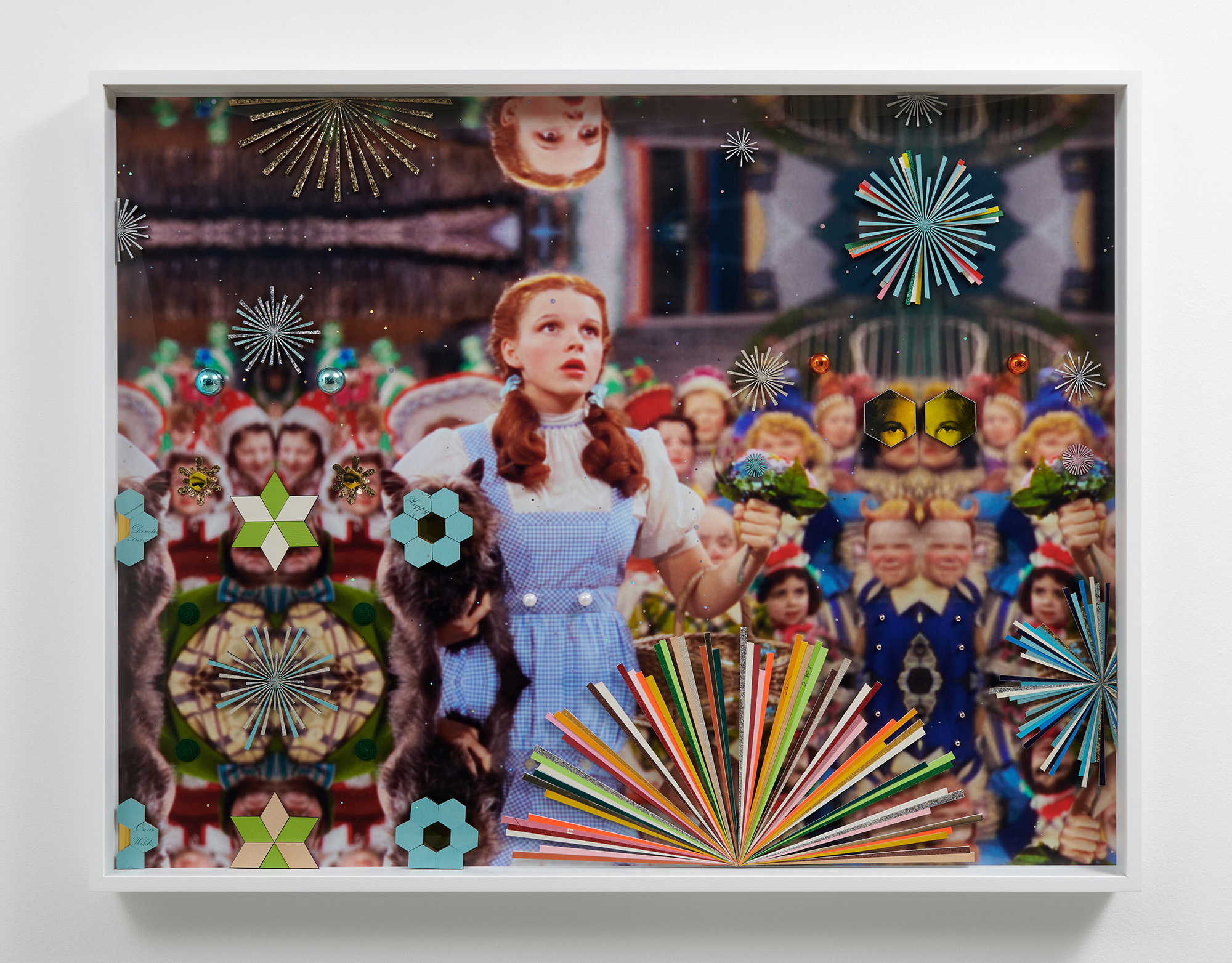
Vertigo, 2023, digitally manipulated and printed image, found paper, vintage album cover paper, felt, mirrored plexiglass, ornaments, glitter
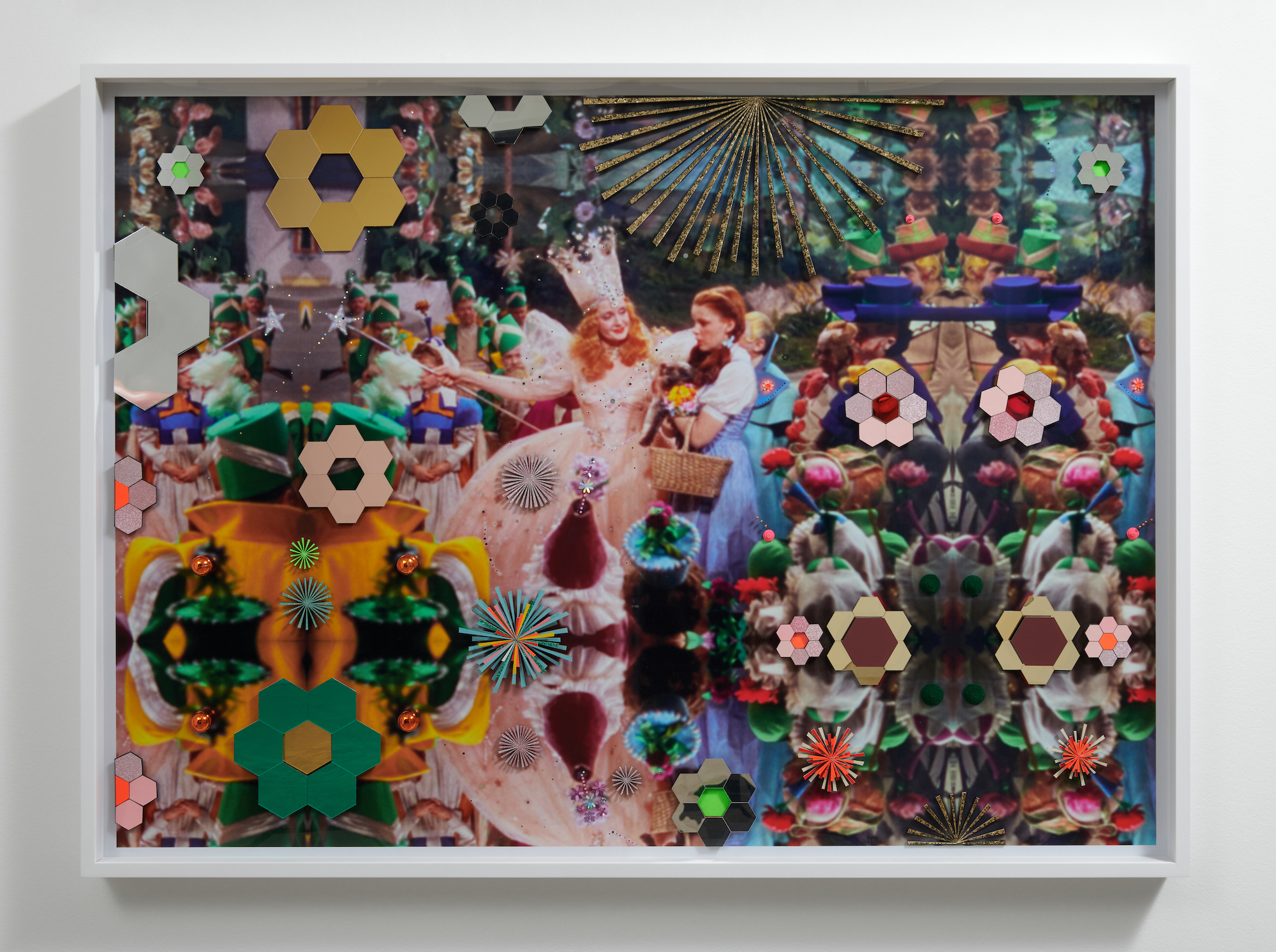
Garden of Earthly Delights, 2023, digitally manipulated and printed image, found paper, vintage album cover paper, felt, mirrored plexiglass, ornaments, glitter
O’Connor, who is forty-two and lives and works in San Antonio, was raised by an accountant father who was obsessed with Disneyland, where he has taken (and still takes) the family for vacations. On her mother’s side, her grandmother was named Dorothy and aunt named Glenda, as a consolation, according to the artist, for “living in desolate oil lands of Odessa, Texas.”
In her smallest piece, a three-and-a-half-inch vintage photo, O’Connor sets a tessellated pool of mercury at the feet of a plainly dressed older couple standing in front of the Sleeping Beauty Castle at Disneyland. One of O’Connor’s primary modules is the hexagon, inspired by her mother’s quiltmaking, as well as the paper cells of wasp nests. O’Connor puzzles these building blocks together en masse, echoing the geometric forms of nature, from the scales of butterfly wings to the mosaic skin of lizards. In O’Connor’s world-scapes, these additions function as shields over wounds—openings and vulnerabilities protected by armor. Voids and negative spaces are non-existent. Instead of obscuring an emptiness, this decorative compulsion performs a denial: much like a shopaholic on a spree, seeking distraction in order to look away from the hard parts, whether personal or societal.
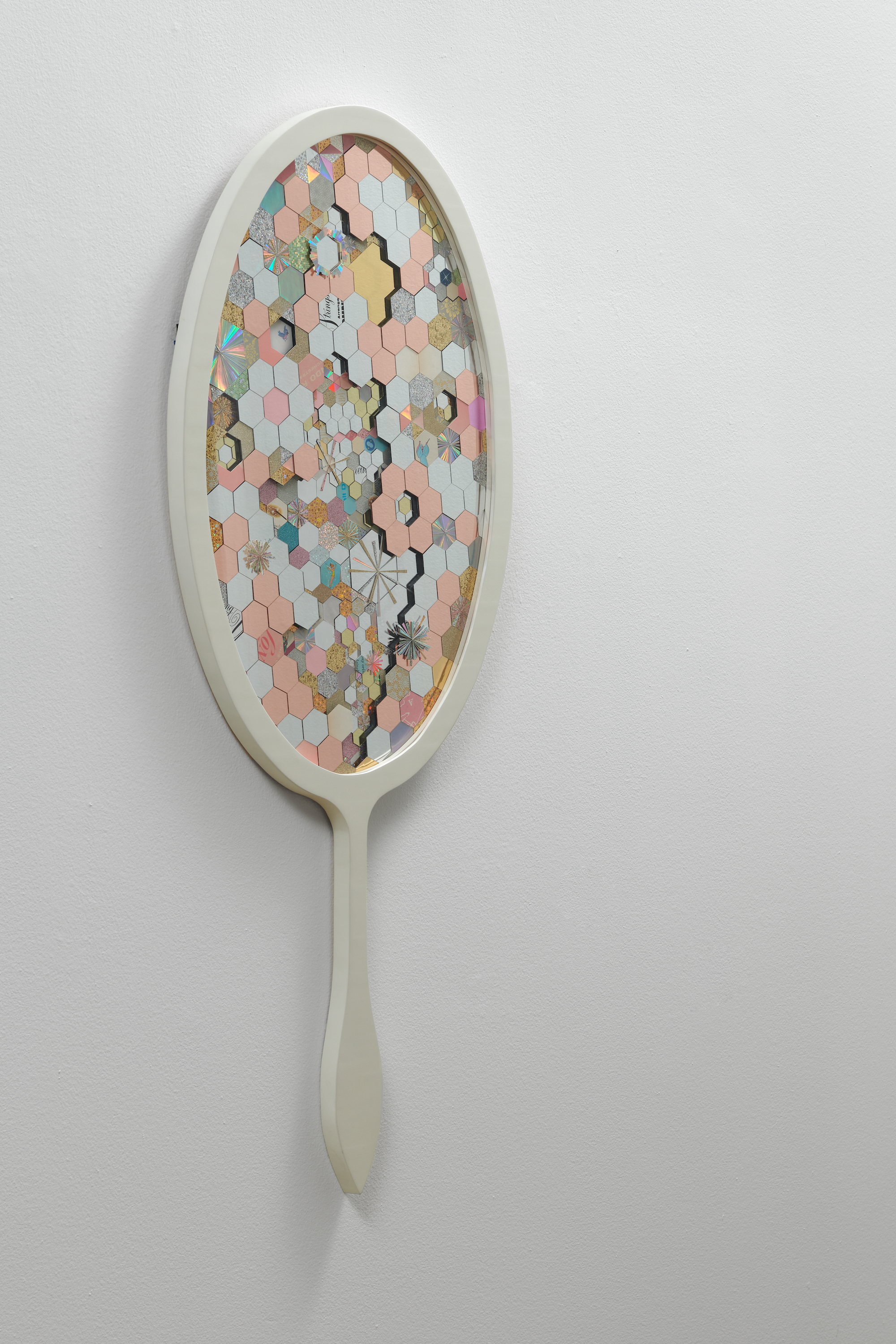
Mirror Mirror, 2023, digitally printed image on archival paper, found paper, vintage album cover paper, mirrored plexiglass, wood, paint
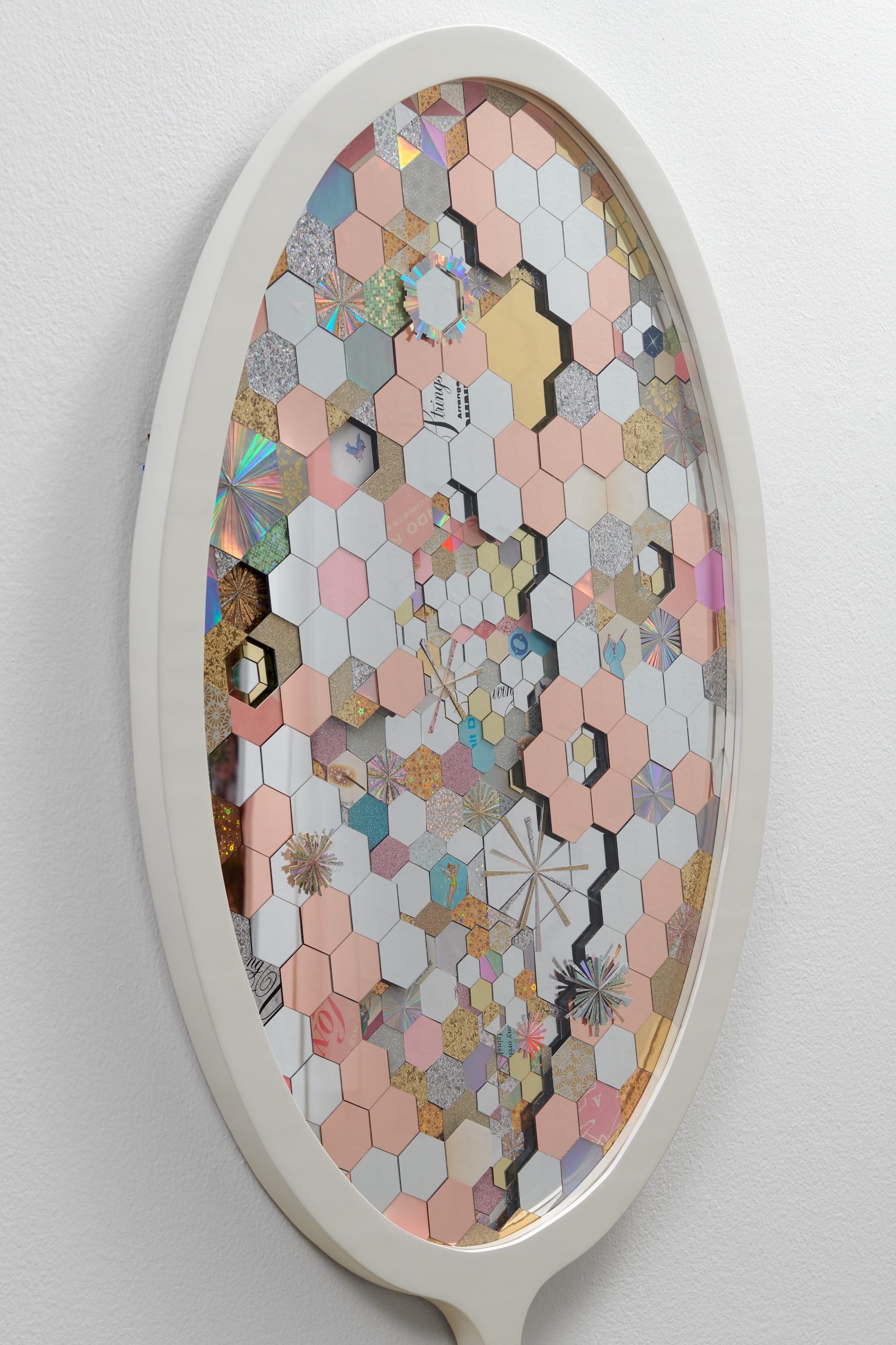
In Plunge Pool (Violet Aura: Elvis’ Pool; Palm Springs, CA), O’Connor replaces the placid surface of Elvis’ Palm Springs backyard pool with a brilliant aqua watery cavern, partially veiled by multilayered tessellations of glittery, colorful patterns. Starbursts float in alluring juxtaposition to the black and white palm fronds of the just-add-water desert fantasy landscape.
Old-fashioned hallucinations can come from fever dreams or through psychotropic means; in the digital era, hallucinations are generated by missteps with AI that lead into perpetuating tangents. How can we shield ourselves now? O’Connor's most innovative work seems to respond to this question, as it escapes the frame altogether. In two sculptural wall mounted pieces—Mirror Mirror, a hand mirror, and Blinded by the Light, a pair of spectacles—O’Connor’s collages replace what might be expected as their surfaces. The reflective mirror becomes a complicated field of seductive collage and abstraction. The lenses refract swirls of wonder. Instead of an exchange, they suggest only a perpetual enchantment.
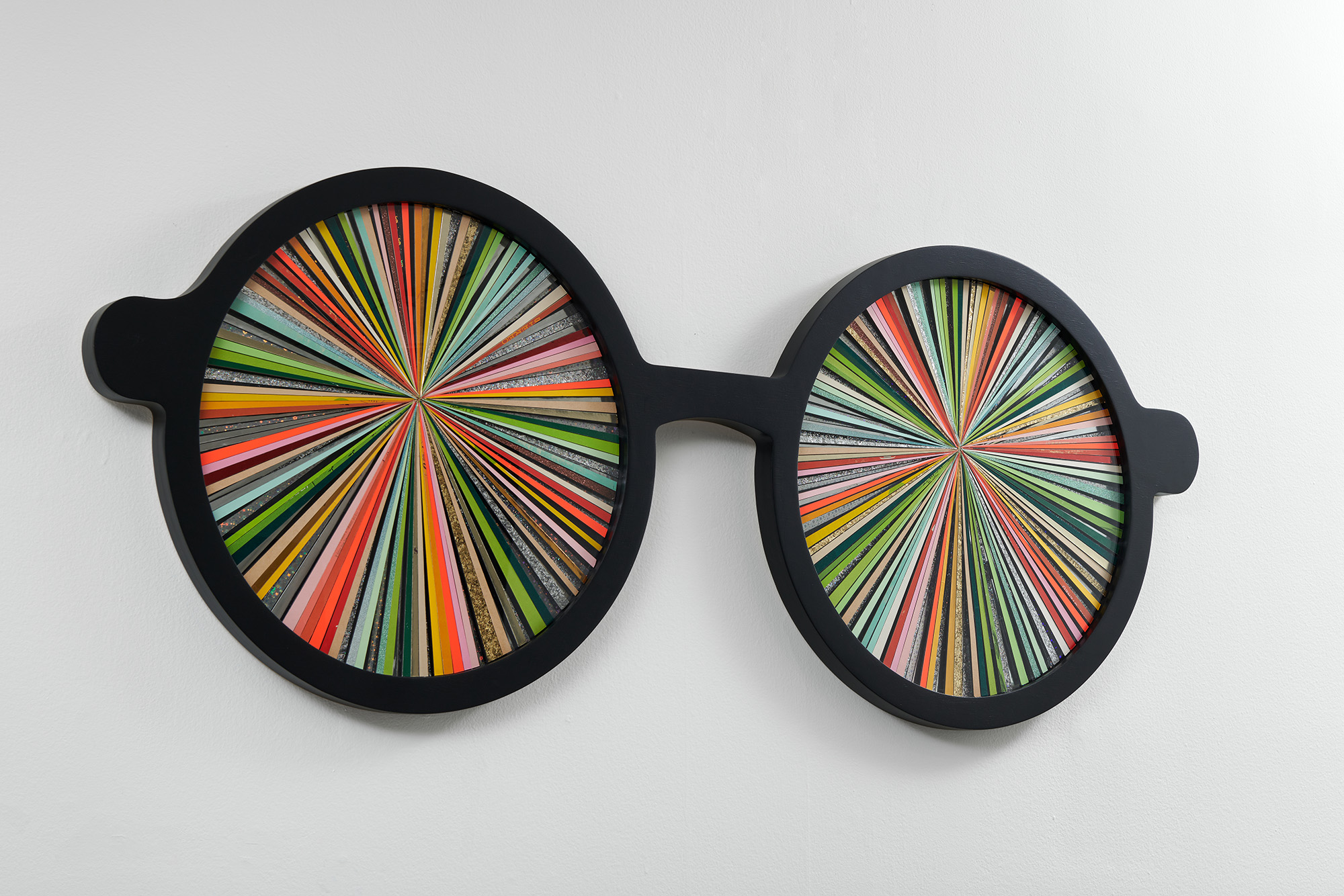
Blinded by the Light, 2023, found paper, vintage record cover paper, wood, paint
For more stories that celebrate visual art, order a copy of the Oxford American’s Southern Art Issue.



